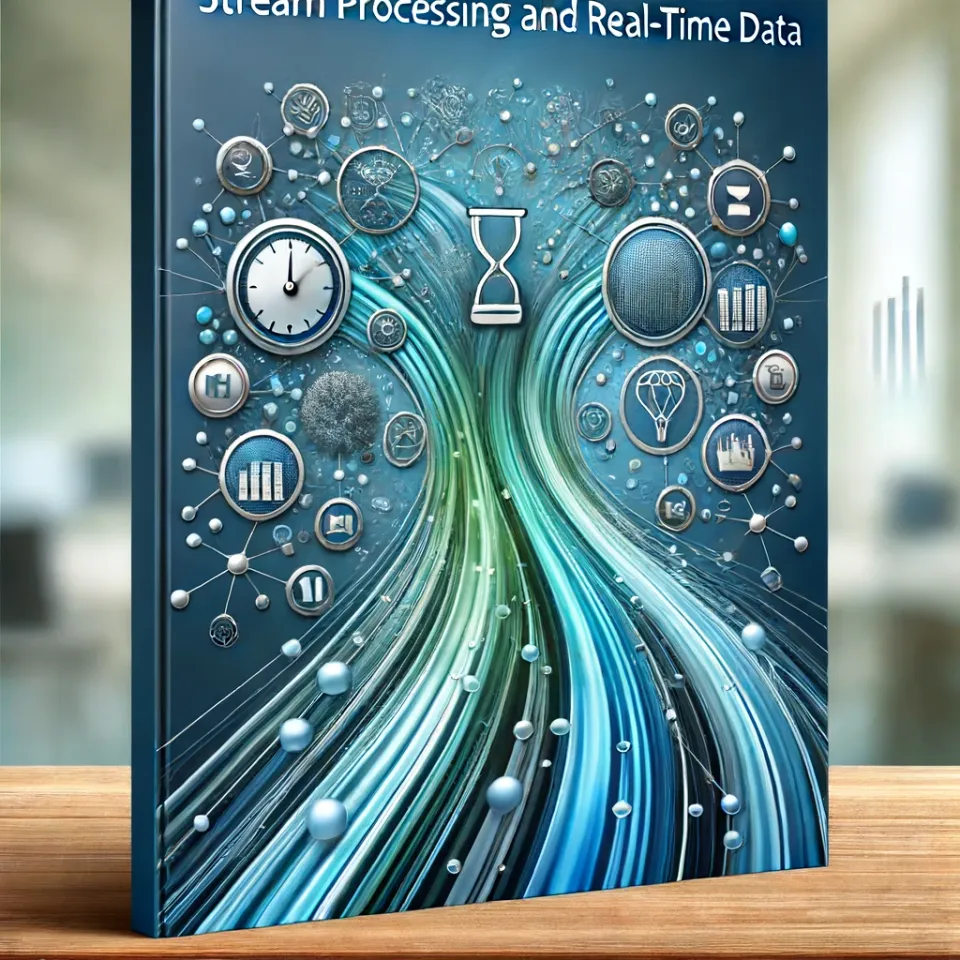Themes: Open-Core And Long-Term Alpha (Pt.2)

Summary
- Open-core data companies are thriving due to the unique demand landscape for the modern data stack that requires open-source instead of close-source SaaS productivity tools.
- Early innovators have experienced bumpy rides towards IPOs and commercial success. Due to substantial changes, business models and collaborations across the value chain are now more efficient and mature.
- As the open-core business model is proving successful, we are seeing next-gen startups emerge at rapid rates and public open-core names experience a slower growth decay.
- In Part 2, we take a look at MongoDB, Cloudera & Hortonworks, Elastic, and Confluent. In Part 3, we'll cover emerging next-gen startups to put on your radar.
Data and DevOps are two themes running hot in both public and private domains. The data industry was fairly muted for a while because it was long in the grips of legacy giants like ORCL and IBM who have their own proprietary software suites that are not open-sourced. This legacy tech stack allows legacy tech giants to maximize profitability, at the expense of limiting the total TAM.
With the rise of the cloud and maturing infrastructure OSS, startups emerged in the various layers of the modern data stack (MDS). Some of these MDS are open-core while some like SNOW are not, and key open-core players like Starburst and Databricks are gradually adding more close-sourced components to their SaaS offerings.
OSS and MDS interact with a flywheel effect. MDS breaks down the monolithic legacy tech stack tightly controlled by legacy vendors. A successful MDS implementation relies on every layer of the stack; each layer specializes in a certain component but interoperates with each other to deliver an end solution that is more agile, flexible, cost-effective, and reliable versus legacy data stacks. The benefit of these MDS OSS, such as Dbt, hinges on a robust infrastructure OSS stack that allows MDS OSS developers to quickly reuse proven building blocks so they can then focus on innovating on core data engineering issues without being troubled by needlework. MDS helps accelerate the OSS movement because most of the MDS tools are open-sourced to evolve and innovate faster than legacy vendors.
The maturity of infrastructure OSS, open-core business models, and the public clouds, have all helped accelerate the innovation in the data OSS field. Additionally, SNOW's IPO in 2020 was another seminal moment for the entire MDS industry. The hype generated by SNOW was that the data stack was (and still is) ripe for change. Amongst the fiercest competition from OSS startups, as well as hyperscaler giants who can virtually price the product at raw compute costs, SNOW became a $100bn market cap company (for a while), and has consistently traded at one of the highest multiples in the market.
Although SNOW itself is close-source, it uses, maintains, and supports numerous open source projects including Terraform of HCP, Feast, Sequelize, Apache Iceberg, Anaconda, and FoundationDB. Most importantly, the entire persistent cloud service stack of SNOW is built on top of FoundationDB, a distributed key-value store open-sourced by AAPL, to manage account credentials and key data.
SNOW's success should give tons of confidence to investors considering to fund any startup related to MDS. From late 2020 to early 2022, we witnessed heightened deal activity across the board, but in data-related startups, it was even hotter. Investors were very willing to write big checks for very early stage startups with little revenue, a typical sign of a market bubble.
MongoDB (MDB)
MongoDB was founded in 2007, and is the fourth oldest open-core company. If you exclude Tenable (TENB) who struggled with GTM for a long period of time, MDB is the oldest scaled-up open-core company that is yet to be acquired by a larger tech giant. While Red Hat was acquired by IBM, and MuleSoft acquired by Salesforce, MDB remains standalone after its IPO, and successfully reaccelerated its growth, which is something very rare for SaaS/enterprise tech companies.
Similar to Red Hat's dominance in enterprise Linux distribution, MDB is the de facto standard for non-SQL document databases. The previous generation of databases were primarily used for saving strings like credit card numbers. With the explosive growth of the Internet, more diverse contents were generated like text documents, images, video, and audio files, which also need a database. This is the place where MDB emerged to capitalize on the unmet demand and offer a free document database for developers. The two co-founders are the former co-founders and CTO/CEO of DoubleClick, an ad tech company acquired by Google which formed the backbone of the giant's $200bn+ ads business. Another co-founder started ShopWiki, a search engine for shopping, which back in the mid-2000s, must have necessitated tons of engineering innovation to bring the idea to fruition - in 2011 it was acquired by Oversee, the comparison site operator.
For a long period of time, MDB found it hard to execute its GTM because previously they used the GNU Affero General Public License version 3 (AGPLv3) for its open-source license. In 2018, MongoDB created a new open-source license called the Server Side Public License (SSPL) to better align with its interests as an open-core company. The main difference between AGPLv3 and SSPL is related to the distribution of the software and the extent to which the software and stack must be open-sourced and available to the public.
SSPL is similar to AGPL but goes a step further to close the "SaaS loophole". In addition to the rights and obligations of AGPLv3, if you run an SSPL-licensed program as a service, you must also open-source all programs that you use to make the service available. This includes, without limitation, management, hosting, backup, storage, and log file systems and the like.
The SSPL was created because MongoDB felt that cloud providers were benefiting from their code without contributing back to the open-source community, and hence were not contributing to MDB's interests. They designed the SSPL to ensure that companies that would provide MongoDB as a service would either need to open source their codebase or negotiate a commercial license with MongoDB. As cloud providers would be generally unwilling to share their entire codebase, it forces them to agree a commercial license agreement with MongoDB.
In short, the main difference is that the SSPL requires more code to be open-sourced than the AGPLv3 if you're running the software as a service. Specifically, under SSPL, all software used to deliver the service, not just the software itself, must be open sourced. And this is not attractive to cloud providers, which pushes them to agree a commercial license with MongoDB.
It's important to note that the SSPL has been somewhat controversial, as some consider it not to be a true open-source license. The Open Source Initiative (OSI), the organization responsible for defining and maintaining the open-source license criteria, has not yet approved SSPL as an open-source license.
More specifically, this move is targeting AWS, who has been free-riding various open-source projects for many years. While many open-source project developers spend a lot of time maturing and developing the software, AWS is able to grab most of the economic value by simply deploying these OSS in AWS as a managed service to enterprise customers, at a lower price because AWS owns the raw IaaS layer.
In the case of MongoDB, AWS launched a managed version called Amazon DocumentDB, which is compatible with the MongoDB API. This competition puts pressure on MongoDB to find new ways to monetize its software and ensure its long-term growth. The SSPL protects MongoDB's commercial interests and makes it less appealing for cloud providers to offer MongoDB as a service, unless they contribute back to the community or compensate MongoDB for its work by agreeing to a commercial license.
At the same time, MongoDB launched its own managed database service called MongoDB Atlas. Atlas provides a fully managed, global, multi-cloud database service for MongoDB, allowing users to deploy, operate, and scale their databases across various cloud providers with relative ease. This allowed MongoDB to compete directly with AWS and other cloud providers by offering a managed service built and maintained by the same team that develops MongoDB.
The introduction of MongoDB Atlas and the switch to the SSPL have helped MongoDB grow its revenue and gain more control over its software's commercialization. As a result, MongoDB has been able to invest more in R&D, improve its product offerings, and expand its market share. While the SSPL remains controversial, it's undeniable that the combination of Atlas and the new licensing model has played a significant role in MongoDB's recent growth and success.
MDB's share price action shows open-core business is still largely misunderstood by investors. There are periods of time when the revenue growth decelerated and then multiples contracted significantly. Investors then called it uninvestable because open-source lacks a moat when hyperscalers can provide managed services at a lower price to crush and limit the TAM of the vendor. There are periods of the time when revenue growth reaccelerated and then multiples expanded to irrational levels. Investors then praised how great MongoDB Atlas is and quickly built a story about why MDB can crush hyperscalers who are not the developer of the OSS standard.
On a risk adjusted basis, it is always better to build up positions in open-core names when their revenue growth decelerates while the product is in the early phase of the adoption. This is because, by the nature of open-core, there is a long tail of service support and managed product offerings demanded by enterprises. Typically, enterprise developers initially attempt to use the OSS without support, but over time, and especially when they need to scale, they realise the value of the managed service and will most likely upgrade and/or add more features etc. This means that the revenue growth decay is not as great as most SaaS or consumer tech companies'.
On the other hand, investors shouldn't buy open-core companies when it is priced to perfection because the competitive threat from hyperscalers persists. Although SSPL license prohibits potential competitors from providing MongoDB-as-a-Service, there is still a way to circumvent it. Take MSFT's CosmoDB, for example, According to MSFT, CosmoDB is entirely proprietary and has no connection with MongoDB OSS. However, CosmoDB also actively markets 100% MongoDB compatibility and MDB customers can move their MDB deployments to CosmoDB seamlessly.
This is a traditional MSFT modus operandi. MSFT hates open-source but it knows open-source is inevitable. So instead of using the OSS code directly and thus having to open source the entire MSFT tech stack, MSFT reverse engineered the API of OSS projects, and offered a product that doesn't use OSS code, but is 100% compatible with the OSS. So when a user of the OSS moves to MSFT's product, although the two don't share the same source code, they can have zero switching costs because the interface is the same.
We noticed that MDB's 2021-2022 runup was too excessive, and likewise was the subsequent share price plummet that bottomed in November 2022. When the forward growth expectations are really pessimistic for MDB, there is a substantial amount of upside, and MDB can easily deliver expectation beats because they are at the centre of the multicloud + unstructured database ecosystem and hence has substantial long-term traction ahead. This line of thinking garners further support given its Atlas product was totally rewritten in 2018. This means that, although MDB started in 2007, its existing revenue driver started in 2018, so it won't turn legacy that quickly.
MDB is pricey right now, trading at 21x and 28x EV/S and EV/GP, respectively, and the business, like many SaaS firms, is not generating an elite Rule of 40. Based on the latest quarter, its Rule of 40 is 43% (29% growth, 14% FCF margin), which is better than most peers but probably not exceptional enough to command these multiples. For further context, MDB's EBIT margin in the most recent quarter was -18%, largely due to a 28% SBC-to-revenue ratio.




